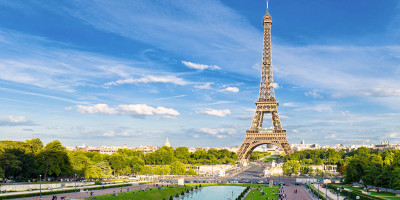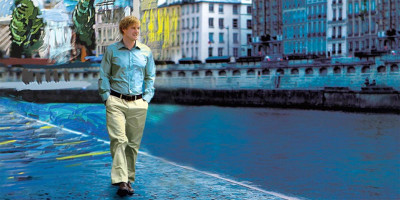
Goa Gajah by Boy Lawson from Wikimedia Commons
Top 5 Fun Facts about Goa Gajah ‘Elephant Cave’
One of the top tourist destinations in Bali is Goa Gajah, also known as Elephant Cave Temple, which is an important archaeological site. Going back to the 11th century, Goa Gajah’s Elephant Cave Temple was built.
The temple was constructed for prayer and private meditation on a hillside where two streams converged to form a river confluence because the area was revered.
1. It served as a sanctuary at first

Goa Gajah by Tropenmuseum from Wikimedia Commons
Although the exact beginnings are unclear, the building of the cave has been dated to the 11th century. Its original purpose was as a sanctuary. Two rivers converged at the location, leading people to consider the region to be sacred. So, a temple was constructed.
Before Dutch archaeologists discovered the cave in 1923, it had been abandoned for generations. Since 1995, Goa Gaja Cave has been a candidate for the UNESCO World Heritage List.
2.Its original name was “Lawa Gajah”

Lord Ganesha by Niranjan Arminius from Wikimedia Commons
Elephants are not native to Bali, and the island has just recently welcomed them through tourism. So why is it called Elephant Cave? In ancient documents, the name was first recorded as “Lawa Gajah,” eventually changing to Goa Gaja. Additionally, some claim that Lwa Gajah was once another name for the River Petanu.
Then, the sacred cave is devoted to Ganesha, a Hindu god with an elephant’s head as a representation. Ganesha is the god of beginnings and dismantling obstacles. He is the patron deity of the arts, sciences, intellect, and knowledge. He is the child of Shiva and Parvati.
3. It was carved out by a giant

Kebo Iwa by Wikimedia Commons
Local legends claim that a giant named Kebo Iwa hollowed out the cave. He dug into the firm rock with his fingernails. He also reportedly founded the Goa Lawah complex and the neighbouring Gunung Kawi complex.
4. The cave entrance is unique

Goa Gajah by DerGenaue Allrounder from Wikimedia Commons
The barong face, a fierce monster, has been meticulously carved into the rock, making it nearly impossible to miss the cave. Although it doesn’t exactly resemble an elephant, that is what it is meant to be. Patterns of flora and animals can be seen all around the gaping mouth, which serves as the doorframe, and the blazing eyes.
There is a small pillar to the left of the cave’s entrance. It has images of Ganesha, demons, and the mother sign Hariti/Men Brayut that date back about 1000 years. Around the cave, there are also a few little statues.
5. The cave is part of a larger temple
The cave doesn’t exist by itself, of course. You get a very excellent view of it when you descend the stairs from the parking lot because it is a part of a larger temple complex. The Greeting Hall is located at the bottom of the steps (wantilan).
Rows of boulders and broken pillars lie nearby. Right across from the stones, those were formerly a component of the gender-separated ceremonial bathing waters (Patirtaan). Before entering the cave, you can still see the blessed water (tirta), statues, and fountains that were used for purification.
How to get to Goa Gajah
As Goa Gajah is easily accessible from any location in Bali, renting a motorbike or a car with a driver is the simplest method to get there. Driving south of Ubud, past the monkey sanctuary and into Bedulu, turn east (left) onto Jalan Raya Goa Gajah. Goa Gajah and other sights are marked by numerous signs.
If you are coming from the south of Bali, it will take you between 1.5 and 2 hours to travel to Saba by taking Jl. Pantai Saba and Jl. Prof. Dr. Ida Bagus Mantra.
Follow Jl. Pantai Saba farther. From Jl. Padat Karya in Blahbatuh, go to Jl. Kebo Iwa. Take Jl. Raya Semebaung and Jl. Udayana to Jl. Raya Goa Gajah in Bedulu. After another two minutes, on the right side of the road, you will find a sign reading “Welcome to Goa Gajah.”

 English
English











